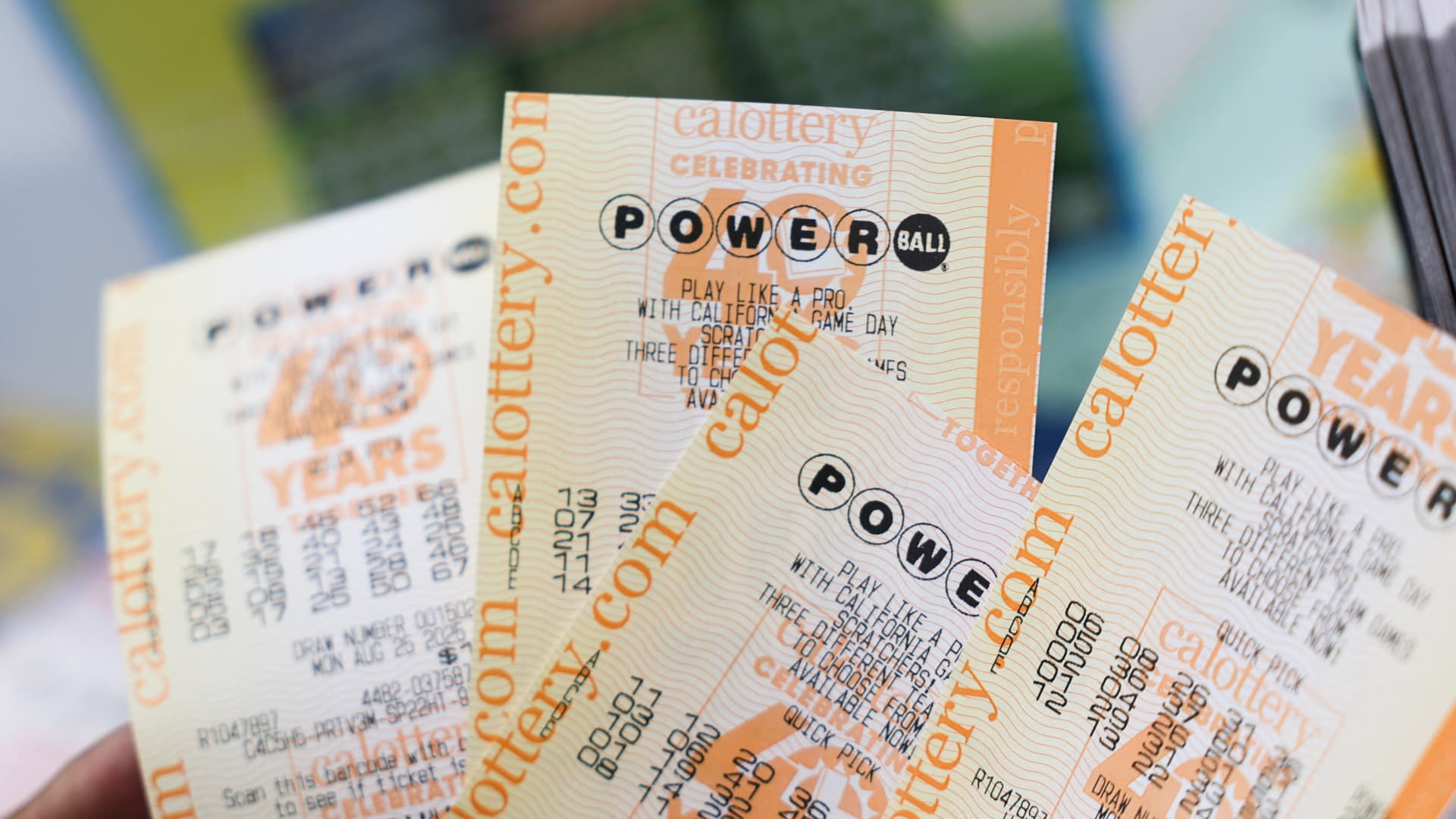CNBC’s Investing in Space newsletter offers a view into the business of space exploration and privatization, delivered straight to your inbox. Sign up to receive future editions.
The Soyuz TMA-19M rocket launches into space from Kazakhstan’s Baikonur Cosmodrome on Dec. 15, 2015.
NASA/Joel Kowsky | Getty Images
Overview: Made in Russia
Smartphone enthusiasts can pick up fresh gear nearly every year — rocket aficionados usually face a longer wait.
For watchers of Russia-made launch vehicles, the clock’s now ticking down until December, when Moscow-headquartered state space agency Roscosmos still intends to carry out its first test launch of the Soyuz-5 rocket.
“Yes, we have plans for December, everything remains in force,” the Roscosmos Head Dmitry Bakanov said Aug. 22, according to Russian state news agency Tass.
The rocket, which is expected to become fully operational in 2028, is unlikely to shock by way of novelty. A decade in the making under the development name “Feniks” and popularly known as Irtysh, the Soyuz-5 is widely viewed as a medium-class launch vehicle that reincarnates the Ukraine-manufactured Zenit-2 rocket.
Moscow plans for the all-Russian Soyuz-5 to be the latest member of Russia’s workhorse Soyuz rocket family. It will be equipped with RD-171MV engines built by NPO Energomash, which former Roscosmos chief Dmitry Rogozin praised as having “no equals in the world in terms of power” back in 2019. Powered by kerosene and liquid oxygen, the Soyuz-5 will be able to balance a roughly 17-ton payload.
If it meets the December deadline, the Soyuz-5 test launch will be no small feat for Roscosmos, which has faced funding shortages since the February 2022 start of Russia’s invasion of Ukraine. The space agency had lost 180 billion rubles ($2.24 billion) by August 2024 and planned to put up non-core assets worth more than 11.4 billion rubles up for sale to shore up its activities.
The war in Ukraine marked a turning point for Russia’s space sector. The European Space Agency severed ties with Roscosmos in 2022, ending the two institutions’ partnership over the ExoMars rover mission and further lunar ventures. The breaking of ties also initially raised question marks over Moscow’s continued cooperation to maintain the International Space Station. Critically for the Soyuz line, the dissolution of this relationship also saw Roscosmos pull out from the ESA space center in Kourou, French Guiana — the pad for 27 Soyuz launches, which carried the likes of OneWeb and Galileo satellites between 2011-2022.
Since then, Roscosmos has switched gears and is looking to launch the Soyuz-5 from Kazakhstan’s Baikonur Cosmodrome, which Astana is trying to leverage to kick start its own space industry and attract foreign operators and investment. The Russian space agency, which has been using the Baikonur facility since shortly after the collapse of the Soviet Union, is paying Kazakhstan $115 million annually to lease the complex until 2050.
Getting a new rocket model to the launch pad and off the ground is no easy feat. The heavily mediatized successes and explosive failures of SpaceX’s test flights of its giant Starship — which pulled off a successful 10th trial launch this week, after a series of fiery setbacks earlier in the year — show as much. Chinese firm Landspace is also targeting an orbital debut for the Zhuque-3 by the end of the year.
Russia itself test launched its first post-Soviet era rocket model, the Angara-A5, in June last year, following two aborted launch attempts. But as the space industry increasingly progresses toward more cost-effective reusable rockets, the real test for Russian innovation will come once Moscow completes development of the Soyuz-7, known as the Amur-SPG — a methane-fueled launch vehicle, intended as a more cost-effective substitute to Russia’s workhorse rocket Soyuz-2. Its first stage is designed to be reused up to 50 times. As of January, Roscosmos is expected to finalize the rocket by 2030, with its launch site under construction at Russia’s Vostochny Cosmodrome.
What’s up
- India locks in on space as future of security — New Delhi sees space as the future of economic and security growth and cannot afford to be outpaced in these ventures, India’s Defense Minister Rajnath Singh said. — Times of India
- Poland sees through first ISS mission — Defence24 explores Poland’s first venture to the International Space Station, after Polish scientist Sławosz Uznanski-Wisniewski took part in the Ax-4 mission over the summer. — Defence24
- Scientists urge action against space launch air pollution — Scientists are calling for global action to address air pollutants resulting from space take-offs, after discovering that the launches of mega-constellation communication satellites have caused a threefold hike in emissions of carbon dioxide and soot. — The Guardian
- Outcome of UK space agency’s merger with science department unclear — The U.K. Space Agency is being absorbed by the Department for Science, Innovation and Technology (DSIT) in a bid to cut red tape — but it remains to be seen whether the process will resolve any of the chronic setbacks encumbering the U.K.’s space policy. — The Conversation
Industry maneuvers
- New rocket plans surface as China targets space expansion — China’s state-owned and private rocket makers are setting sights on further launch vehicles, as Beijing continues to progress its lunar and space exploration ambitions. — Space News
- Space solar panels could supply most of Europe’s renewable energy within 25 years —Solar panels set in space could provide up to 80% of Europe’s renewable energy by 2050, according to a new study from researchers at King’s College London. — The Independent
- The U.S.-SpaceX relationship — Now valued at $400 billion, Elon Musk’s SpaceX has become a critical instrument in the U.S.’ ongoing space access and broader lunar and Mars ambitions. — CNBC
- China’s private space sector gains momentum – China’s commercial space companies have picked up pace over the last decade as a key pillar of Beijing’s hopes to beat out Washington in a new space race. — International Institute for Strategic Studies
Market movers
- SpaceX makes comeback with Starship test launch after fiery setbacks — SpaceX launched its giant Starship rocket, breaking a string of explosive failed attempts earlier this year and deploying a first batch of dummy Starlink satellites. — CNBC
- Avio and Isar Aerospace clinch ESA launch contracts — Isar Aerospace and Avio have won launch service contracts under the European Space Agency’s Flight Ticket Initiative and will support the ISISPACE Cassini and Infinite Orbits Tom & Jerry missions, which are expected to take place after 2026. — European Spaceflight
- Blue Origin stands down from New Shepard launch — Blue Origin canceled a launch this week to troubleshoot an issue with the New Shepard rocket’s booster avionics. The New Shepard was set to undertake the NS-35 mission out of West Texas. — Spectrum News
- Firefly says flow separation issue behind Alpha launch failure — Firefly Aerospace has closed the investigation surrounding Alpha Flight 6’s failure in April, when the rocket’s first-stage booster came apart within moments of separation. — Payload
On the horizon
- Aug. 28 — SpaceX’s Falcon 9 to launch with Starlink satellites out of Florida
- Aug. 28 — NordSpace’s Taiga to undertake test flight out of Newfoundland, Canada
- Aug. 29 — SpaceX’s Falcon 9 flies out with Starlink satellites out of California
- Aug. 30 — Rocket Lab’s Electron rocket to launch the Hypersonic Accelerator Suborbital Test Electron (HASTE) Jake-4 mission out of Virginia
- Aug. 31 — The European Space Agency’s Jupiter Icy Moons Explorer to undertake a Venus flyby
- Aug. 31 — Space X’s Falcon 9 to depart with Starlink satellites out of Florida
- Sept. 2-3 — Space X’s Falcon 9 to lift off with Starlink satellites out of California and Florida












